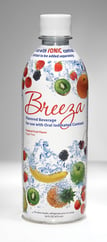
If the COVID-19 pandemic taught us anything, it revealed how fragile our supply chain systems really are. As of this writing, the US is experiencing a critical shortage of the contrast medium Iohexol.
This shortage is a result of GE’s main manufacturing facility in Shanghai being shut down due to the Chinese government’s lockdown of more than 26 million people on March 31, 2022, amid a spike in cases of the Corona virus there. GE is the largest supplier of Iohexol to the United States.
The shortage hit crisis mode in early May 2022, as radiology departments began to find themselves running out of contrast, rationing CT scans, and scrambling for solutions that would enable them to continue to provide critical patient care.
An important diagnostic tool
Iohexol is an iodinated contrast media that can be used intravenously or orally in diagnostic imaging to help find or diagnose problems in several areas of the body. The intravenous solution is used for CT scans of the brain, back, heart, head, blood vessels, reproductive tract, and other areas of the body. The oral solution is primarily used for problems involving the stomach, bowels, and pelvis.
 Because of how heavily Iohexol is relied upon in diagnostic imaging, the American College of Radiology (ACR) issued emergency guidance for imaging centers to cope with the shortage. The ACR recommendations include the use of alternative studies, reducing dosage based on patient’s weight and other criteria, and the use of alternative contrasts to Iohexol - both ionic and non-ionic.
Because of how heavily Iohexol is relied upon in diagnostic imaging, the American College of Radiology (ACR) issued emergency guidance for imaging centers to cope with the shortage. The ACR recommendations include the use of alternative studies, reducing dosage based on patient’s weight and other criteria, and the use of alternative contrasts to Iohexol - both ionic and non-ionic.
Above all, however, the ACR recommends that facilities do not sacrifice image quality by using suboptimal doses.
Emergency measures and alternatives
Other recommended emergency risk mitigation strategies include prioritizing contrast-enhanced CT scans for emergent cases and delaying elective and non-emergent procedures for a few months as long as it is safe to do so, protocol changes, and alternative imaging considerations for certain procedures.
For abdominal studies requiring oral contrast media, many imaging facilities are seeking alternatives to Iohexol. Barium is an option unless there is a concern of a gastrointestinal perforation or leak. Diatrizoate meglumine (marketed as Gastrografin, Bracco Diagnostics) is another type of iodinated oral contrast which can be used for many abdominal studies requiring contrast media.
Facilities turning to diatrizoate meglumine for some of their studies during this shortage may find that patients are struggling to drink the required amount for their study needed for optimal opacification due to the bitterness of the contrast. Their difficulty drinking not only impacts the department’s throughput and productivity; it may also result in a suboptimal study for the patient, leading to both wasted time and contrast, and rescheduling for another study.
How Beekley Medical can help
 Beekley Medical can help imaging facilities using diatrizoate meglumine as their oral contrast media improve patient compliance with drinking instructions.
Beekley Medical can help imaging facilities using diatrizoate meglumine as their oral contrast media improve patient compliance with drinking instructions.
Breeza® flavored beverage for use with oral iodinated contrast (REF 220) is the only flavored beverage made with a bitterness blocker to mask the bitter taste of iodine-based contrast. Patients given contrast mixed with Breeza are more likely to comply with full drinking instructions - resulting in better initial scans, faster throughput, and less waste.
 Another solution for those facilities using MR enterography for certain abdominal studies is Breeza flavored beverage for neutral abdominal/pelvic imaging (REF 221), a standalone beverage for bowel distention that is less viscous and easier to drink than barium sulfate solution.
Another solution for those facilities using MR enterography for certain abdominal studies is Breeza flavored beverage for neutral abdominal/pelvic imaging (REF 221), a standalone beverage for bowel distention that is less viscous and easier to drink than barium sulfate solution.
How supply chain leaders can help prevent future disruptions
While GE is working hard to return manufacturing in Shanghai to full capacity and expects to be so this week, this situation sharply highlights how vulnerable hospital supply chains are to events far outside of their control.
Dr. Thomas M. Grist, UW School of Medicine and Public Health, summarizes that “The radiology and hospital community should take this lesson as a wake-up call to adapt our supply chain to prevent similar emergencies in the future. We need to endeavor that companies with majority market share have more plant capacity with consideration for facilities located in the United States.”
He also adds that in place of “just-in-time” inventory practices which were the norm prior to the pandemic, hospitals and imaging centers keep a 6-month supply of ICM on hand rather than simply a week's supply. While he acknowledges that this will result in additional storage costs, he feels the safety net provided for supply disruption justifies the cost.

Mary Lang Pelton
Director of Marketing Communications
